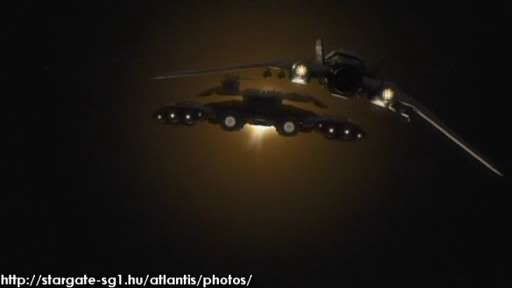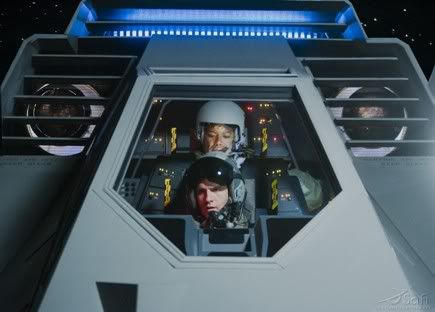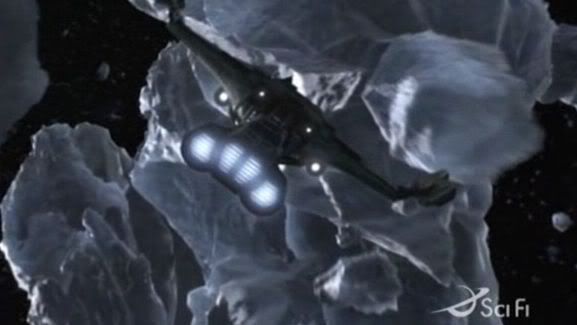I originally posted this in another thread but I figured it really deserved it's own post. So how about it, do the F-302s have new engines, possibly the ion engines from the Hebredians?
Look at this image. It's of the F-302 in intruder.

Now they are WAY out of any planet's atmosphere in interplanetary space. So there's no way even an aerospike jet engine will work. They still require SOME atmosphere to get oxygen from. Yet the "conventional" engines are still lit up. Add to that the fact that a solid rocket is not throttleable. You light it and it burns until it goes out. You can't slow it down or stop it (and it wasn't lit in this shot in any case). If they were using just that, no way could they pull the moves they do out there.
Along the same lines look at Ethon

Here the solid rocket shows to be ignited. However you also have the glow from the main engines as well. Again, the only way they could possibly be burning is if they carried their own oxygen, which cuts into fuel/weapons storage and makes for a BIG boom if something goes wrong. I just don't see them putting LOX on a fighter craft if at all avoidable. Not to mention it would probably burn through it's limited supply really quickly..
And then there's a glow in the engines in this picture as well, also from Ethon.

And lastly just for grins, let's look at a shot of a ship with the Hebredian ion engines from Space Race. Looks nagglingly familiar. Now where else have I seen glows like that?

Look at this image. It's of the F-302 in intruder.
Now they are WAY out of any planet's atmosphere in interplanetary space. So there's no way even an aerospike jet engine will work. They still require SOME atmosphere to get oxygen from. Yet the "conventional" engines are still lit up. Add to that the fact that a solid rocket is not throttleable. You light it and it burns until it goes out. You can't slow it down or stop it (and it wasn't lit in this shot in any case). If they were using just that, no way could they pull the moves they do out there.
Along the same lines look at Ethon
Here the solid rocket shows to be ignited. However you also have the glow from the main engines as well. Again, the only way they could possibly be burning is if they carried their own oxygen, which cuts into fuel/weapons storage and makes for a BIG boom if something goes wrong. I just don't see them putting LOX on a fighter craft if at all avoidable. Not to mention it would probably burn through it's limited supply really quickly..
And then there's a glow in the engines in this picture as well, also from Ethon.
And lastly just for grins, let's look at a shot of a ship with the Hebredian ion engines from Space Race. Looks nagglingly familiar. Now where else have I seen glows like that?


 I VERY much doubt they have ion drives on either the 303, 304 or the 302.
I VERY much doubt they have ion drives on either the 303, 304 or the 302.




Comment